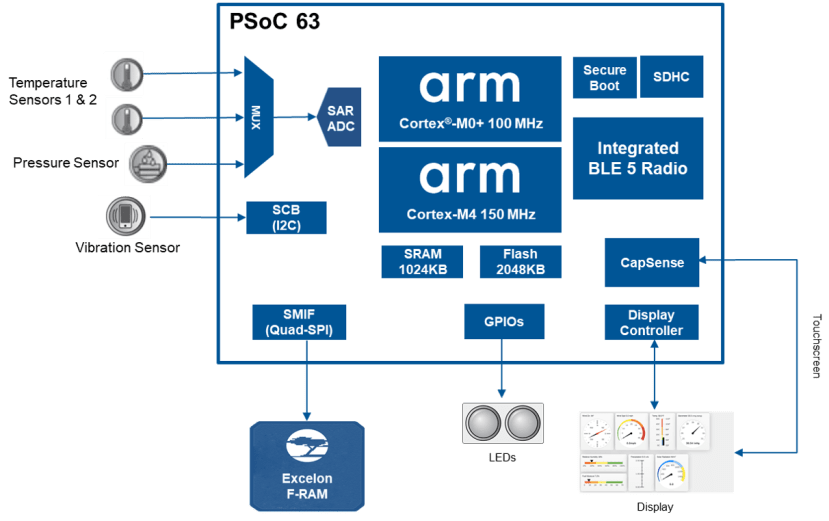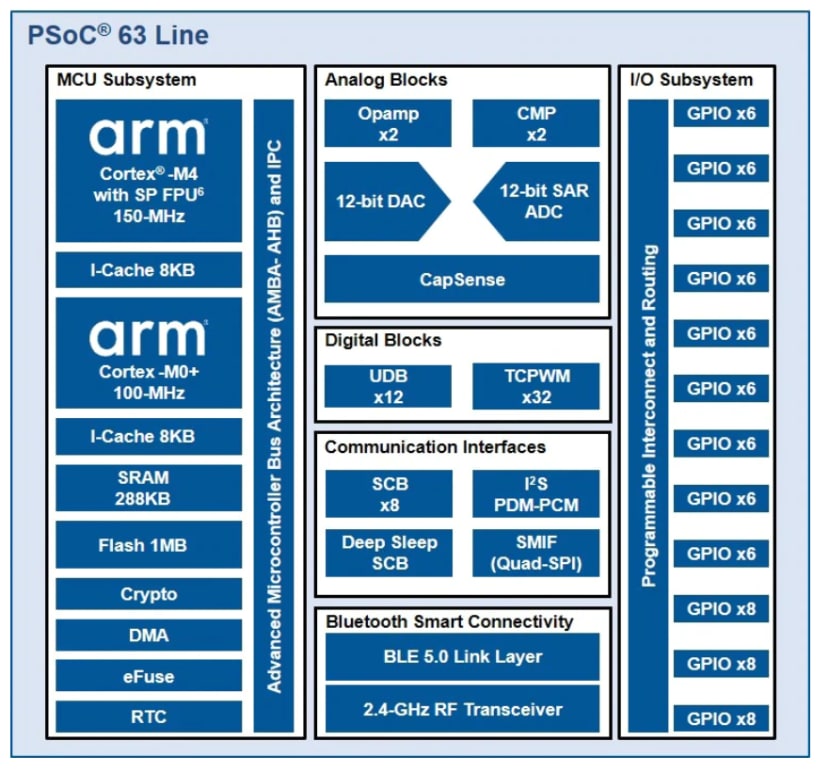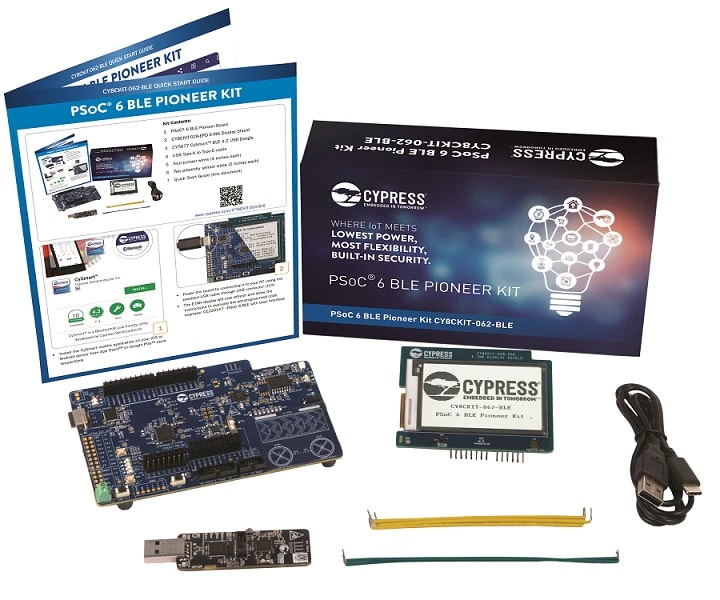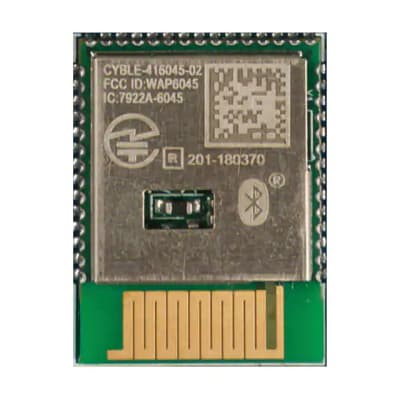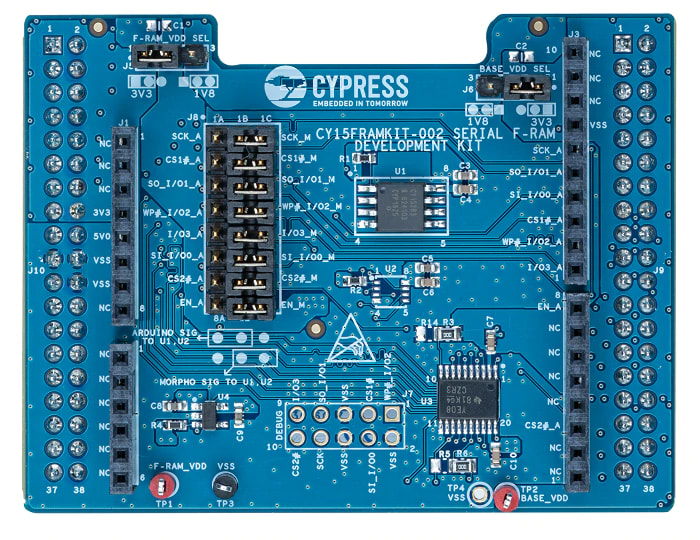IoT Powered Predictive Maintenance with Cypress’ PSoC®6 Microcontroller and Excelon-FRAM
Follow articleHow do you feel about this article? Help us to provide better content for you.
Thank you! Your feedback has been received.
There was a problem submitting your feedback, please try again later.
What do you think of this article?
Imagine your car broke down and you took it to a local garage to realize that you need to pay a couple of thousands of pounds (or dollars) to fix it. What if you knew this repair was coming a month ago and could have fixed it for cheaper? Now, consider the same scenario in industrial settings. How much do you think the factory is losing during the downtime due to broken machines and faulty parts? What if there is a way to avoid replacing the machines altogether?
Research conducted in 2017 by Oneserve, a field service management company based in Exeter, in partnership with British manufacturers shows that the machinery downtime is costing the companies more than £180 billion every year. According to this study, 53% of the downtime is caused by internal faults in the machinery, whereas 83% of the UK manufacturers have to replace their broken machines at least once a year.
By leveraging the technologies of the Industrial Internet of Things (IIoT), we can now predict the potential damage to the equipment, hence avoid unplanned maintenance costs. The predictive maintenance approach utilizes sensors and data analytics to monitor the condition of in-service equipment and schedule maintenance before severe damages occur.
DesignSpark caught up with Cypress, an Infineon Technologies Company, to learn about their offering for IIoT-based predictive maintenance. As it was expected from Cypress, the customers can access a wide range of low-power, high-performance microcontrollers, wireless radios and memory solutions while being suitable for harsh conditions of the industrial environment.
The block diagram below summarizes Cypress solution for predictive maintenance.
Block diagram for Predictive Maintenance with PSoC®63 MCU and Excelon-FRAM
PSoC® 63 BLE 5 MCU for Predictive Maintenance
The core of Cypress’ offer for predictive maintenance is the PSoC®63 MCU family with Bluetooth Low Energy (BLE). It features a dual-core architecture with ARM’s Cortex®-M4 and Cortex-M0+ processors that run at 150-MHz and 100-MHz, respectively, and up to 1MB Flash and 288KB SRAM options. The combined capabilities of high-performance microcontroller, configurable analog and digital peripherals, industry’s latest BLE connectivity solution and the ability to implement mission-critical data logging all in one chip make PSoC®63 line an ideal solution for predictive maintenance applications.
PSoC® 63 Line (cypress.com)
Programmable analog and digital peripherals present on PSoC® 6 MCU enable interfacing the sensors that are essential for monitoring the health of the machines, including temperature, pressure, vibrometer sensors and more. The PSoC 63 Line also incorporates Bluetooth Smart, or also called Bluetooth Low Energy, a subsystem for wireless connectivity complaint with BLE 5.0 specification. The CapSense® capacitive-sensing block enables the implementation of low-power and reliable capacitive-sensing solutions, including touch buttons, sliders, wheels, trackpads, and touchscreens. Lastly, the chip supports Quad-SPI interface for mission-critical data logging with throughput up to 640 Mbps.
There are several development kits available for programming and debugging of PSoC® 63 MCUs.
PSoC® 6 BLE Pioneer Kit (CY8CKIT-062-BLE)
The PSoC® 6 BLE Pioneer Kit (CY8CKIT-062-BLE) (136-7817) will be a good place to start. This kit is designed to highlight the features of PSoC 63 family, specifically, CY8C6347BZI-BLD53 (179-7776) chip in 116-BGA package and with 78 GPIOs with advanced configuration features. The available memory capacity (1MB of Flash, 288KB of SRAM) is expanded with onboard 512Mb Quad-SPI NOR Flash memory for storing code and data. The PSoC 6 BLE Pioneer board also features the EZ-PD™ CCG3 Type-C power delivery system, on-board board programmer/debugger (Kitprog2), CapSense® touch slider, buttons and proximity sensors and more.
PSoC® 6 BLE Pioneer Kit (cypress.com)
Apart from the Pioneer board, the kit includes CY8CKIT-028-EPD (176-9830) E-INK display shield with a 2.7-inch E-INK display, a thermistor, a motion sensor and a microphone, CY5677 CySmartTM BLE 4.2 USB Dongle, USB Type-A to Type-C cable, four jumper wires and two proximity sensor wires.
Clicker 2 for PSoC® 6 (MIKROE-2849)
Another development kit option for rapid testing and prototyping with PSoC® 63 line is Clicker 2 for PSoC® 6 (MIKROE-2849) (170-8233) , which features the same CY8C6347BZI-BLD53 MCU, but combines that with two mikroBUSTM sockets for “plug-and-play” functionality with existing Click boardsTM. MikroBUSTM sockets support a standard set of communication protocols such as the UART, SPI, I2C, as well as PWM, a pair of GPIOs, and analog input pins. The designers can start prototyping their idea for predictive maintenance solution straight out-of-the-box with the vast selection of Click boardsTM, including sensor boards, wireless connectivity solutions (WiFi, Bluetooth, GSM, NFC, etc), memory development kit, HMI and more.
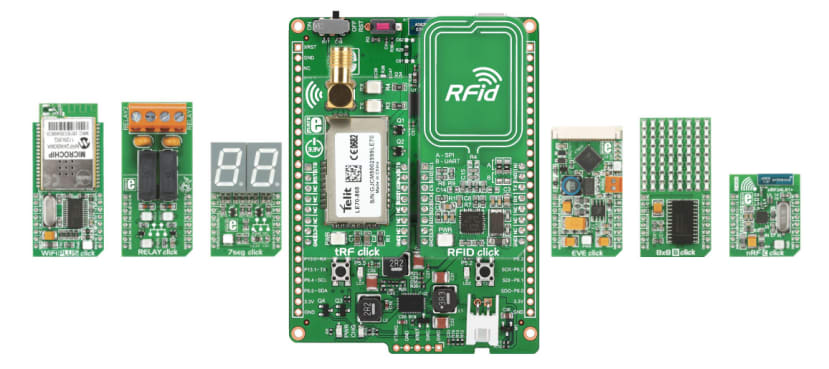
Click boardTM combinations for Clicker 2 for PSoC® 6 (mikroe.com)
Now take PSoC® 63 BLE silicon device, and add crystal oscillators, trace antenna and a few passive components, and you have yourself CYBLE-416045-02 EZ-BLE™ Creator Module
(187-4779)
, Cypress’ fully certified and qualified module Bluetooth Low Energy (BLE) wireless communication. It is a complete solution in a 14 × 18.5 × 2.00 mm package and can be tested out with several development kits, including PSoC® 6 BLE Prototyping Kit (CY8CPROTO-063-BLE)
(181-2207)
and EZ-BLE Arduino Evaluation Board (CYBLE-416045-EVAL)
(187-4766)
.
CYBLE-416045-02 EZ-BLE™ Creator Module (cypress.com)
PSoC® 6 BLE Prototyping Kit (CY8CPROTO-063-BLE)
This prototyping kit (181-2207) is very affordable (£15) considering what you get for it. Along with the CYBLE-416045-02 module, the CY8CPROTO-063-BLE kit integrates KitProg2, onboard programmer and debugger, that can be separated away from the target board. The KitProg2 utilizes the PSoC 5LP device (CY8C5868LTI-LP039) (124-2970) and can be also used as a USB-UART and USB-I2C bridge. As a standalone module, KitProg2 is suitable for programming and debugging of PSoC 3, PSoC 4, PSoC 5LP, or PSoC 6 families through the SWD interface.
PSoC® 6 BLE Prototyping Kit (CY8CPROTO-063-BLE) (cypress.com)
The CY8CPROTO-063-BLE prototyping kit is designed to be a simple and low-cost platform to perform a rapid evaluation of PSoC 6 BLE device out-of-the-box. The board contains two User LEDs to monitor the state of the device, but more LEDs can be connected using expansion headers or a breadboard. There are User and Reset buttons on board for providing input to and resetting the CYBLE-416045-02 module, respectively. A 32-kHz WCO crystal is present on the board for accurate timing for BLE applications, but there is also a possibility to add an external crystal on the existing footprint of (2.0 mm × 1.6 mm).
Excelon F-RAM for data-logging in the factory environment
In IoT applications, including condition monitoring and predictive maintenance, where a large amount of sensor data is generated, an external memory device might be required for continuous and reliable data acquisition. Supporting the MCUs with external memory within industrial settings can bring a set of design challenges for engineers. The obvious one is to ensure that these memory devices can withstand harsh environmental conditions while continuously logging data for extended periods. Moreover, the data needs to be logged instantly and reliably, in case the power is lost. With these two demands in mind, Excelon Ultra F-RAMs offers data retention of up 100 years and read/write endurance of 100-trillion write cycles for 15-20 years at 85°C. The Excelon FRAMs feature a low-pin-count 108 MHz QSPI interface, while still consuming 200x less energy than EEPROM and 3,000x less energy than NOR Flash products. If you want to evaluate all the features of Excelon Ultra QSPI F-RAM, you can try CY15FRAMKIT-002 (189-0538) F-RAM Development Kit to get started.
F-RAM Development Kit (CY15FRAMKIT-002 ) (cypress.com)
Additional resources:
Develop Groundbreaking IoT Designs with the PSoC® 6 BLE Pioneer Kit
PSoC 6: A Cypress Microcontroller Purpose-Built for the Internet of Things
Cypress unveils EXCELON F-RAM: The Mission-Critical Memory for IoT
The industry’s lowest-power mission-critical nonvolatile memory
Cypress PSoC 6 Prototyping Boards



